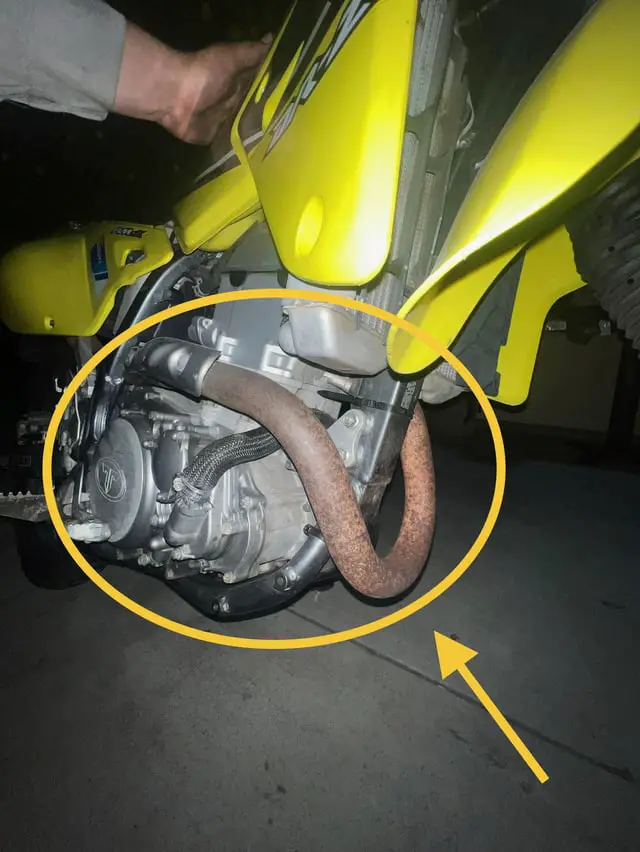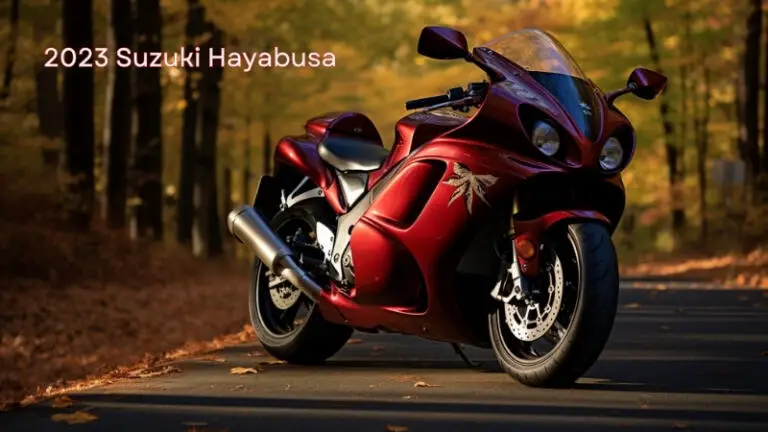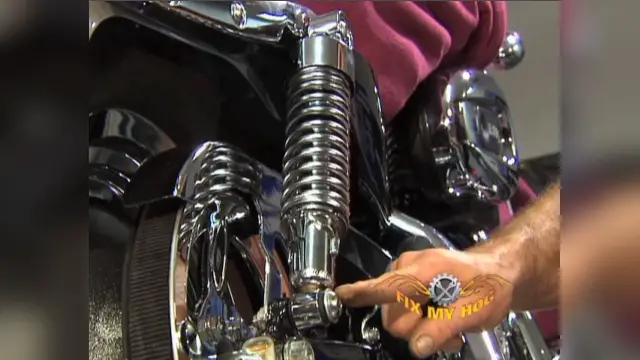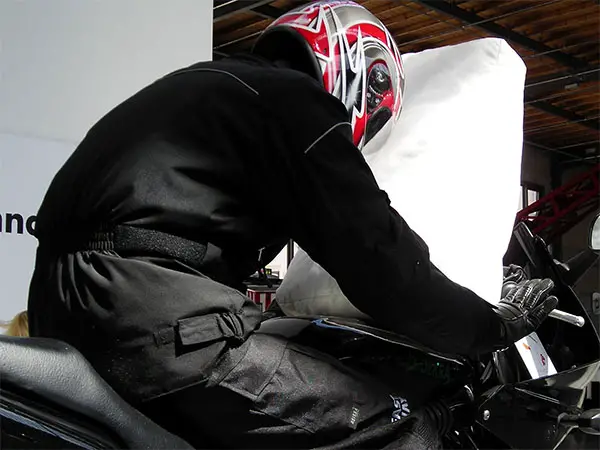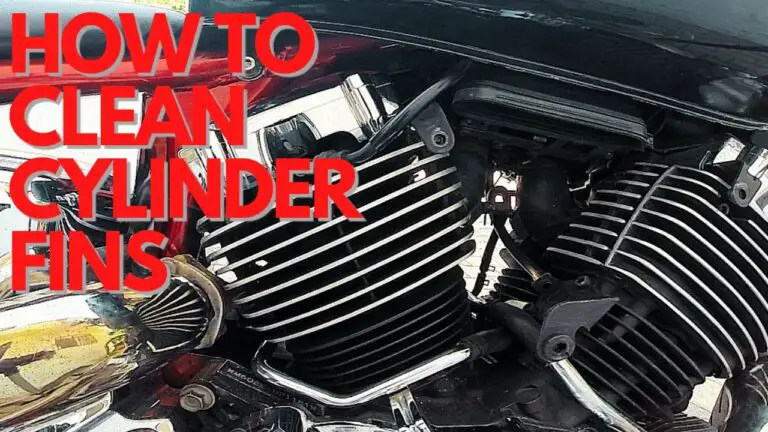How Hot Does a Motorcycle Engine Get
A motorcycle engine can get extremely hot, often running at temperatures above 200 degrees Fahrenheit. This is especially true for air-cooled engines, which tend to run hotter than liquid-cooled engines.
The high temperatures can pose potential risks to the engine if not properly managed.
Factors Affecting Motorcycle Engine Temperature
When it comes to the temperature of a motorcycle engine, several factors can affect how hot it gets. One of the main factors is the ambient temperature, which refers to the temperature of the surrounding environment. In hotter climates, the engine is likely to get hotter as well.
Another factor is the engine size and type. Generally, larger engines tend to produce more heat. Additionally, air-cooled engines tend to run hotter compared to liquid-cooled engines because they rely on natural airflow for cooling.
The cooling system of the motorcycle also plays a significant role in engine temperature. A well-functioning cooling system, such as a radiator and fan, helps dissipate heat effectively and keeps the engine at an optimal temperature.
Furthermore, the quality and level of oil in the engine can affect its temperature. High-quality oil that is at the appropriate level can help lubricate and cool the engine effectively.
In conclusion, the ambient temperature, engine size and type, cooling system, and oil quality and level are all factors that can affect how hot a motorcycle engine gets.
Motorcycle Engine Temperature Ranges
Motorcycle engine temperatures can vary depending on various factors, but on average, they can reach temperatures as high as 200°F (93°C) during regular operation. Ensuring proper cooling and maintenance is crucial to prevent overheating and potential engine damage.
| Motorcycle Engine Temperature Ranges |
| Typical operating temperature range: |
| Riding a motorcycle involves dealing with various temperature ranges. A typical operating temperature for most motorcycle engines falls between 160°F and 220°F. This range is considered safe and allows the engine to perform optimally. However, it’s important to note that the temperature can vary depending on factors such as engine size, cooling system, and riding conditions. |
| Ideal temperature range for different types of engines: |
| The ideal temperature range can differ based on the type of engine. While air-cooled motorcycle engines tend to run hotter, reaching temperatures of 300°F and above, liquid-cooled engines maintain a more stable temperature range of 180°F to 220°F. It’s crucial to understand the recommended temperature range for your specific engine to prevent overheating and potential damage. |
| Maximum safe temperature limit: |
| Exceeding the maximum safe temperature limit can lead to detrimental effects on your motorcycle engine. The exact limit varies, but as a general guideline, it’s best to avoid temperatures exceeding 250°F to ensure optimal performance and longevity of the engine. Regular maintenance, including checking fluid levels and monitoring the engine’s temperature, can help prevent overheating issues. |
Effects Of Extreme Heat On Motorcycle Engines
The effects of extreme heat on motorcycle engines can be detrimental, causing engine damage and wear. When a motorcycle engine gets too hot, it can lead to reduced performance and efficiency. The increased temperature can put added stress on the engine components, potentially causing them to wear out faster. Additionally, high engine temperatures can increase the risk of overheating.
It is important to note that different motorcycles may have different temperature ranges in which they operate. Air-cooled motorcycle engines typically run at higher temperatures compared to liquid-cooled engines. The hottest part of a motorcycle engine is often the cylinder head.
When a motorcycle engine runs too hot, it can result in various issues such as increased oil consumption, loss of power, and even engine damage. To prevent overheating, it is essential to maintain proper oil levels and cooling systems, ensuring that the engine remains within a safe temperature range.
How To Monitor And Control Motorcycle Engine Temperature
When it comes to monitoring and controlling motorcycle engine temperature, two crucial factors to consider are temperature gauges and indicators, as well as proper maintenance and cooling system checks. Temperature gauges and indicators provide real-time information about the engine’s temperature, allowing riders to take necessary precautions if the temperature gets too high. Regular maintenance and cooling system checks, including checking coolant levels and ensuring proper airflow, are essential for preventing overheating and maintaining optimal engine temperature.
Furthermore, techniques for cooling down a hot engine should also be known to every motorcycle rider. This includes pulling over to a safe spot and letting the engine idle to cool down, using a fan or cold water to help dissipate heat, avoiding high revs and heavy load on the engine, and checking for any underlying issues such as low coolant or a malfunctioning cooling system.
Maintaining the appropriate engine temperature is crucial for the longevity and performance of a motorcycle engine. By understanding and implementing these monitoring and control methods, riders can ensure their engine stays within the optimal temperature range, preventing damage and ensuring a smooth riding experience.
Tips To Prevent Motorcycle Engine Overheating
| How Hot Does a Motorcycle Engine Get |
When it comes to preventing motorcycle engine overheating, regular oil changes and maintenance play a crucial role. Proper lubrication is essential to keep the engine temperature in check. Avoiding excessive idling or prolonged operation at high RPMs is also important as it can cause the engine to overheat. Additionally, ensuring proper coolant levels and circulation is necessary to dissipate heat effectively. Regularly checking the coolant levels and replacing it if needed can help prevent overheating.
It is important to note that air-cooled motorcycle engines tend to run hotter compared to liquid-cooled engines. The temperature of an air-cooled engine can vary depending on factors such as ambient temperature and engine size. While there is no specific temperature range, it is crucial to monitor the engine temperature and take necessary precautions if it starts to get too hot. Monitoring the temperature gauge or using an external temperature sensor can help keep track of the engine’s temperature and prevent any damage.
Comparing Motorcycle Engine Temperature To Car Engines
When it comes to comparing motorcycle engine temperature to car engines, there are a few key differences to consider. Motorcycles typically have air-cooled engines, whereas cars commonly have liquid-cooled engines. This means that motorcycles rely on the flow of air to cool the engine, while cars use a coolant system.One consequence of this difference is that motorcycles often run hotter and at higher speeds than cars. With less oil in the engine at any given time, the oil must work harder and faster to cool down the engine parts.Additionally, motorcycles lack the luxury of a large radiator to dissipate heat, making them more susceptible to overheating. This can be particularly problematic when riding in hot weather or during prolonged periods of high-speed riding.In conclusion, the differences in cooling systems and oil circulation between motorcycles and cars result in motorcycles running hotter than cars on average. It is important to keep an eye on the temperature gauge and take necessary precautions to prevent overheating.Common Questions And Concerns About Motorcycle Engine Temperature
Common questions and concerns may arise regarding the temperature of a motorcycle engine. One question that often arises is how hot a motorcycle engine can get before causing damage. The exact temperature at which damage may occur can vary depending on the specific make and model of the motorcycle. However, it is generally recommended to avoid prolonged exposure to temperatures exceeding 250 degrees Fahrenheit.
When it comes to air-cooled engines, they tend to run hotter compared to liquid-cooled engines. Air-cooled motorcycle engines can reach temperatures upwards of 400 degrees Fahrenheit, especially during extended periods of high-speed riding or in hot weather conditions.
If your motorcycle is experiencing overheating issues, there could be several potential factors contributing to the problem. Some common causes of motorcycle overheating include low oil levels, cooling system malfunctions, or riding at high speeds for prolonged periods without proper airflow.
In conclusion, it is important to monitor the temperature of your motorcycle engine and take necessary precautions to avoid overheating. Regular maintenance, such as checking oil levels and ensuring proper airflow, can help prevent engine damage and keep your motorcycle running smoothly.

Credit: www.youtube.com
Frequently Asked Questions Of How Hot Does A Motorcycle Engine Get
How Hot Can A Motorcycle Engine Get Before Damage?
A motorcycle engine can get as hot as 240-280 degrees Fahrenheit before it starts to sustain damage.
How Hot Do Air Cooled Motorcycle Engines Get?
Air-cooled motorcycle engines can reach temperatures as high as 300-400 degrees Fahrenheit. This excessive heat can cause engine damage and lead to overheating issues if not properly managed. Regular maintenance and adequate airflow are essential to keep the engine temperature within a safe range.
What Is The Hottest Part Of A Motorcycle Engine?
The hottest part of a motorcycle engine is typically the cylinder head, which can reach temperatures of up to 500 degrees Fahrenheit.
Do Motorcycles Run Hotter Than Cars?
Motorcycles often run hotter and at higher speeds than cars, which means there is less oil in the engine and the oil must work harder and faster to cool the hotter parts. This is why motorcycle engines can get hotter than car engines.
Conclusion
Motorcycle engines can reach incredibly high temperatures, especially during long rides or when pushing the speed limits. The heat generated can be detrimental to the engine’s performance and overall lifespan. The lack of oil, combined with the higher speeds and temperatures motorcycles are subjected to, puts a significant strain on the engine.
This is why it is crucial to maintain proper oil levels and ensure your motorcycle is adequately cooled. Regular maintenance, such as checking coolant levels and keeping an eye on the temperature gauge, can help prevent overheating and potential engine damage.
It’s always better to be proactive in taking care of your motorcycle’s engine to enjoy safe and worry-free rides.

